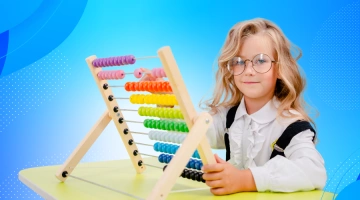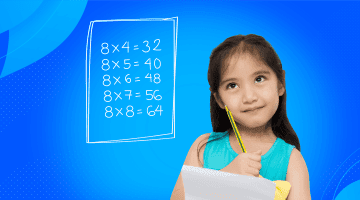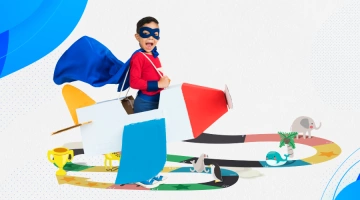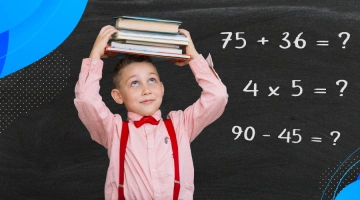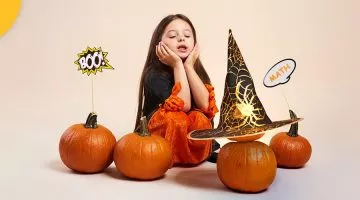Math for 3 year olds: 9 ways to teach math 3-4 year olds
reviewed by Jo-ann Caballes
Updated on June 21, 2024
In early childhood, one of the most important tasks for parents is to help children understand math. Learn about the importance of teaching basic math concepts to 3-4 year olds. Through a blend of theory and practical application, we will discover fun ways to strengthen the foundation of their math skills in the early stage of life.
Third and fourth year old math activities
Math is one of the key activities forming a strong connection between a child’s brain and hands and thus developing other skills and manual dexterity. It appears when toddlers begin to comprehend the concept of numbers and early math. The development of these pre-skills is quite important before trying to introduce more advanced math concepts.
Counting activities for 3-4 year olds
- Counting beads on pipe cleaners
- Roll and count flower game
- Dot to dot printables
- Count and match number tubes
Counting beads on pipe cleaners
It is a simple and fun way of teaching children math using colorful pipe cleaners and beads. It is also perfect for developing fine motor skills. Learning how to count beads on pipe cleaners might seem very easy but it is one of the best math activities for 3-4 year olds to develop their counting abilities.
Roll and count flower game
This flower roll and color activity comes with three pages – a page with numbers from to 6, a page with numbers from 1 to 20 and one with blank flowers. The page with blank flowers is so that kids can roll and then color. They repeat it until all of the flowers have been colored. This means that if they get a number 3, they have to color 3 flowers and so on. Game is over when all of the flowers are colored in.
Dot to dot printables
The dot to dot printables improve such important skills like reading numbers and counting. These sheets would assist your child in recognizing numbers up to 10 and 20 and counting numbers up to 10 and 20 in order. There are a wide range of printables including number lines, number squares and math mats.
Count and match number tubes
Such tubes are an active learning tool through which kids learn how to count objects and match them to the appropriate number numerals. Children will have fun spinning the cardboard roll to look for the right number of dots for each sticker.
Ways to teach math to a 3 year old
- Point to shapes
- Play a sorting game
- Build a tower
- Have fun in the kitchen
- Compare and contrast
- Count it out
- Music and math
- Game-based learning
- Storytelling with math
The most powerful way to teach math to 3 year olds is playing games. Here, children’s impulses and curiosity become a driving force to develop their math intuition.. While teaching math to 3 year olds, you should engage them in real-life problem solving and evoke their interest in the subject. Success in comprehending math via fun math activities for 3 year olds can be considered as an indicator of future academic merit.
Point to shapes
Discuss with your child the shapes around you. When you are walking outside with your child, you may notice a triangular sign or a round stone. ‘Wow, look, this bus is a yellow rectangle!’ Basic skills of spatial sense – the concepts of size, shape, directions and space – are necessary for learning math for 3 year olds.
Play a sorting game
One of early maths for 3 year olds activities is to identify different shapes in a playful way. With the help of sorting toys and shape puzzles, ask your kid to recognize and match the shapes. Through this activity, young learners can develop their analytical thinking skills and spatial awareness as well as understand the concepts of space, size and direction.
Build a tower
If you want to make math for three year olds more engaging, build towers with your toddler. Block play is enjoyable and helps children to develop spatial awareness and mathematical thinking. Motivate your toddler to build block towers of various sizes and shapes. They can use terms “tall,” “short,” “wide” and “narrow” to describe their creations. You can also teach math and introduce the basics of addition and subtraction by asking them to add or subtract blocks from their towers.
Have fun in the kitchen
Do not only let your toddler sit in front of the TV while you prepare meals, but also, include them in small cooking activities in which they will have to measure the ingredients. They can either scoop flour, count the eggs, or pour milk. The practical experience is a fun game that allows them to enjoy the process of learning the concept of quantities, measurement, and volume.
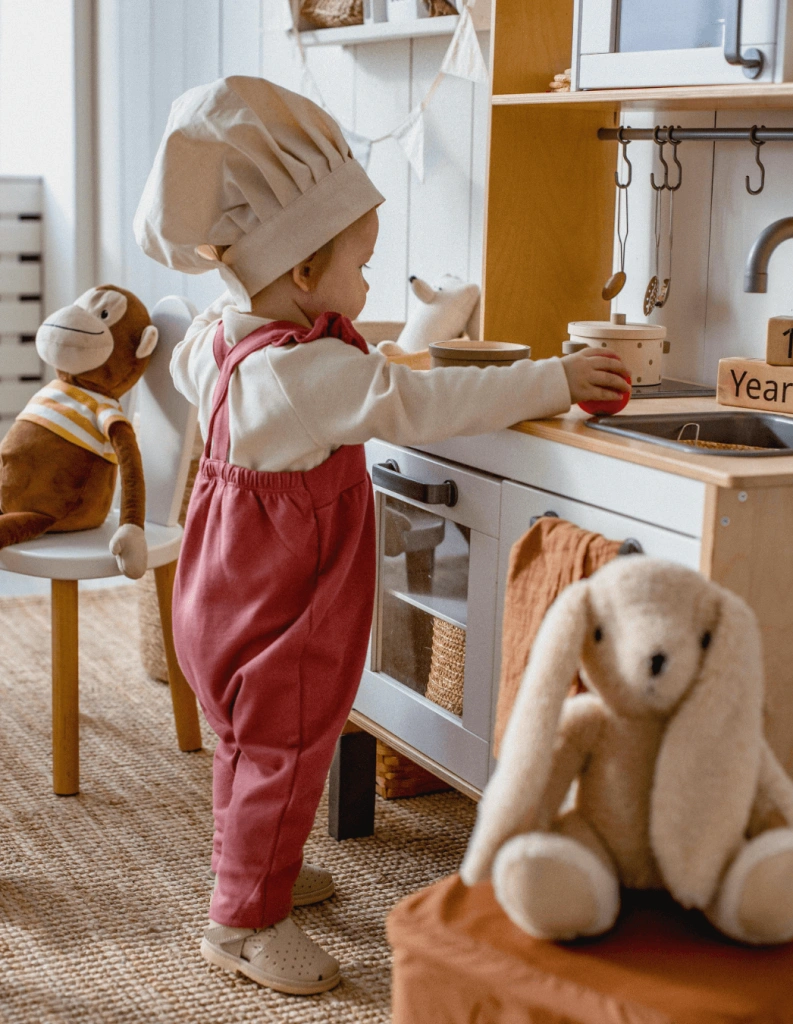
Compare and contrast
Pay attention to the relative sizes of the objects you see around. Some of the best places for practice are a food store or a market. “This pear is smaller than that one”. You can also ask your child to indicate the bigger or the smaller goods. This assists your toddler in the development of the spatial sense and measurement abilities.
Count it out
Pick some small objects – candies or cookies – to count the numbers aloud. “We have one, two, three, four, five green candies” and “Let’s get three of them and put them in the three separate piles.” It is a nice activity for defining the number and operations related to addition, subtraction, multiplication and division.
Music and math
Rhythms and songs help children recall numbers and math operations easily. Clapping to a rhythm or moving to a tune helps learning patterns, sequencing, and counting in entertaining and educative ways at the same time.
Game-based learning
You may create games that involve participants doing counting, classifying, or sequencing, and thus turn a math lesson into an exciting journey. Games such as those with scoring systems, for instance, can be used to introduce basic arithmetic operations and to involve your kid in studying with joy. In the next paragraphs, we provide you with the best counting games mathematics for 3 years old that you can play with your child.
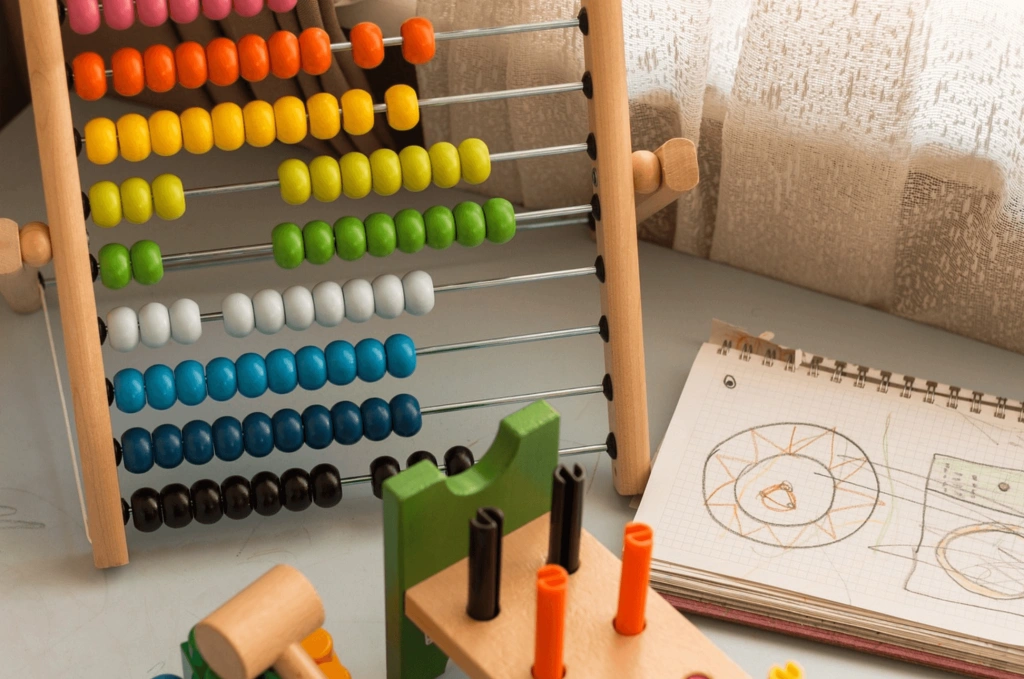
Storytelling with math
Mathematical activities for 3 year olds include making tales about numbers and mathematical operations may encourage your kid to become more interested in math. For instance, this can be done by implementing the characters who have difficulties that can be solved with math, showing how useful it can be in practice.
Math activities for 3 year olds
- Counting with everyday objects
- Math riddles
- Finding the shape
- Measuring and comparing
- Math and nature
- Stories with numbers
Counting with everyday objects
Counting is one of the basic 3 year old math skills and you can make it interesting by using objects around you. Motivate your kids to count their toys, favorite candies, flowers, and animals. This kind of activity is a nice way to practice one-to-one correspondence and counting.
Math riddles
Riddles are a cool activity to stimulate children’s minds. There is no doubt that riddles should become a part of your child’s life. They are a kind of good brain challenge. What’s more, they are an amazing way to provide entertainment and education to kids at home.
Finding the shape
Make a shape hunt game in which your kid has to find the particular shapes in their environment. Create a list of shapes they have to find. It may include triangles, squares, circles, and rectangles. You can investigate your house together, go to the park for a walk or examine the playground. Such activities effectively develop their shape-recognition skills and transform the learning of math into adventure.
Measuring and comparing
Besides other 3 year old math activities, you can teach your kids to understand measurement concepts by introducing sizes and quantities. You can give them building blocks of various sizes and motivate toddlers to arrange them from the largest to the smallest.
You can ask them to compare the height of other objects in their surroundings. This activity will enhance their knowledge of measurement and provide them with the vocabulary of comparative terms such as small, big, short, and tall.
Math and nature
Engaging with maths for 3 years old may include math activities outside by discovering nature. You can take your toddler on a walk and ask them to collect flowers, leaves or stones. Distinguish and group these objects according to their size, color, or shape attributes. Then, you may ask to count the number of things they picked and discuss whether there are more or less, and what is bigger or smaller. This task links math to real life and everyday actions and thus, it stimulates curiosity about the environment.
Stories with numbers
One of the creative math activities for 3-4 year olds is stimulating your toddler’s imagination and vocabulary. Ask them to make easy number stories using their drawings or toys. For instance, they can tell how four dolls shared twelve cookies or how three planes went on a trip where they used six bars of fuel. This activity helps them to learn the meaning of numbers in a practical way and at the same time it improves their ability to think creatively.
How to teach 4 year old math
The best way to teach 4 year old math is to use different approaches and materials such as hands-on activities, visual aids, and storytelling. They are quite similar to those used in teaching three-year-old kids.
Basic mathematics for 4 years is very easy when it combines creativity, patience, and strategy. Many parents are wondering how to teach math to 4 year olds. Firstly, it is necessary to create a friendly atmosphere. This means that the teacher should encourage their students for their efforts rather than just correct their mistakes.
If you practice math-related games and activities every day in game form, learning will become less intimidating and more fun. Solving real-life math problems is one of the math for 4 years old concepts that plays an essential role as it shows the relevance and application of the knowledge, and thus, makes it more meaningful for the children.
Actually, it is not as difficult to introduce maths for 4 year olds as it may sound. If you think about it, you will understand that we use math terms and language every day. We are constantly counting and comparing things using words like ‘big’ and ‘little’, and so on.
But let’s take a glance at three main approaches to teaching math to 4 year old kids.
Hands-on math
If you want to know how to teach maths to a 4 year old and make it more interesting, involve your kids in the learning process and allow them to experiment and participate in it. This teaching method is really good for students who have problems with abstract ideas, as it gives them the opportunity to be physically engaged with the topic. Students can investigate, explore, and ask questions to develop their subject knowledge.
Examples of hands-on math activities for toddlers may include:
- Constructing geometric shapes using blocks or other manipulatives.
- Making visual images of the mathematical ideas, for instance, bar graphs, pie charts, and line plots.
- Solving mathematical problems by doing everyday actions, like measuring and comparing lengths, weights, and capacities.
- The process of investigating mathematical ideas with the help of puzzles, wherein the students have to physically move the material.
Math games
Math games are a fascinating and exciting tool to help children to learn and remember mathematics concepts. Games can be very helpful in the reinforcement of the basic math for 4 year olds skills like addition, subtraction, multiplication and division. Game-based learning and gamification both appeal to kids. They can solve difficult problems with fun, additionally, they present the information in a playful way with the help of different challenges.
Examples of math games may include:
- Board games make children use mathematical concepts in real-world situations.
- Card games that teach elementary math skills.
- Group activities where children have to work together to solve mathematical problems.
Real-world connections in math
Real-world connections are a good way to show the kids the meaning of mathematical concepts in everyday situations. By making the relation between math and the real world and problems, kids can realize the use of math in daily things.
Examples of real-world connections include:
- The use of real-world data to solve mathematical problems, for example, calculating the cost of bananas.
- Stimulating kids to think about the mathematical concepts they apply in their daily lives, for example, measuring the ingredients for a recipe or how far is the place they like the most.
Math activities for 4 year olds
Below, there are examples of how you can teach 4 year old math activities:
Domino fun
You can use dominoes to teach preschoolers about numbers and basic addition. At first, you can ask them to count the number of dots on each side of the dominoes and make them the same. They can learn to add the dots on different dominoes together when they gradually become more used to the idea. This practical activity, through its interactive nature, develops the arithmetic skills of young learners.
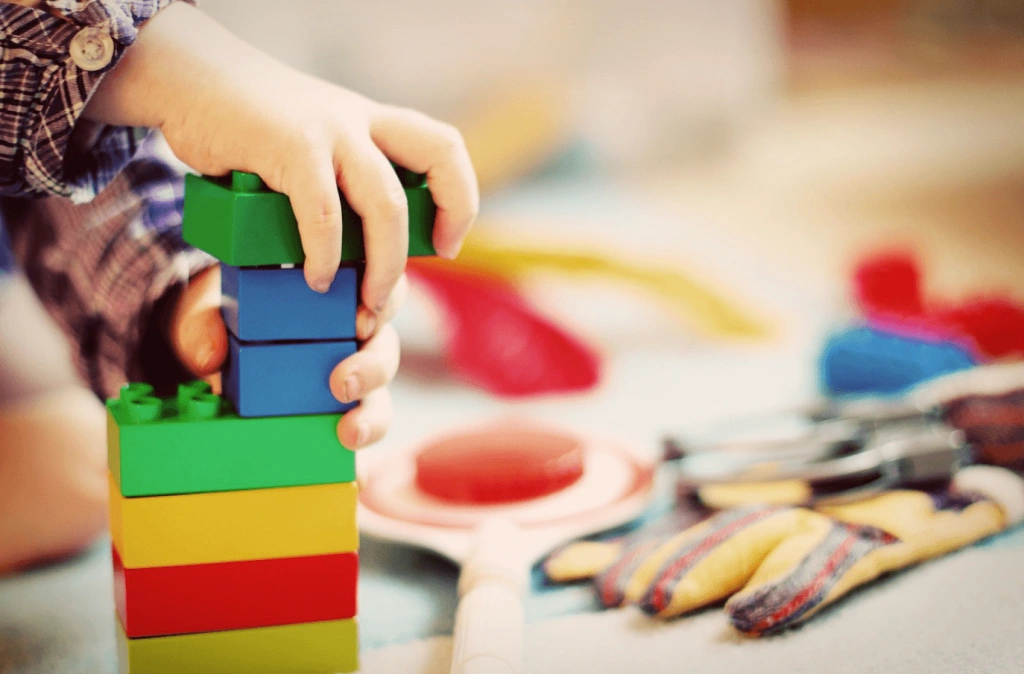
Puzzles
Don’t forget about puzzles while choosing math activities for 4 year olds. They stimulate the brain to solve problems and develop spatial thinking skills. Select those puzzles that are suitable for kids’ age with numbers, shapes, or counting elements on them. When your toddler finishes the puzzle, ask them to name the numbers or shapes that they have placed together. Through this activity, young students improve their cognitive skills and understand mathematical concepts better.
Shape and color sorting
Math lessons for 4 year olds at home can be adventurous. You can mix shape recognition and color identification with sorting tasks. Give your toddler cards or other things of different colors and shapes. Then, ask them to divide these objects into groups according to their shape or color. This activity improves their capacity to categorize and classify things, which are the main requirements for analytical thinking.

Calendar fun
Children can be taught the days, weeks, and months with the help of a basic calendar. Every day, ask them to update the calendar by crossing out the day that has just passed and talking about the current date. Besides, you can also highlight special events like birthdays and festivals with drawings or sticky notes. This task is the first step for the kids to understand basic concepts of time, sequences, and organization.
Math apps and interactive games
In the current digital era, many educational apps and interactive games have been created for early math learning. These applications provide different kinds of activities and materials to teach math to 4 year old, from counting and number recognition to basic operations and problem-solving. Besides, they also make the learning process fun for toddlers and at the same time, they develop basic problem-solving and analytical skills.
Conclusion
Teaching math by playing is not an innovative approach but an essential one in early childhood education. Combining fun and learning, math and having fun become equal terms, transforming math from a troublesome subject to an interesting adventure.
By breaking math down into understandable pieces, your kids will be entertained and keen on learning. This method helps to develop the necessary mathematical skills and builds the child’s positive attitude towards learning. Remember that each amusing second spent exploring basic math is a step for your kid to become self-confident, curious, and capable in the future.





